With the city’s hotel shelter transfers once again imminent, City Limits reached out to nonprofit providers to talk with shelter staff and visit the buildings where the city puts up New Yorkers experiencing homelessness.
Above: scenes from a women’s shelter on Prospect Place in Brooklyn, where Center for Urban Community Services (CUCS) staff are preparing for residents to return from the hotels they’ve been staying in during the pandemic. Photos by Adi Talwar.
Inside an empty women’s shelter on Brooklyn’s Prospect Place, a few objects hint at the chaotic, terrifying early days of the COVID-19 pandemic.
A 2020 calendar lay on a mattress in one of the shelter’s six-person bedrooms. A memo affixed to the wall near a second-floor bathroom, dated March 3, 2020, described once-current information about the “novel coronavirus” — including guidance against wearing masks. “This is proving to be a fast-changing situation,” the document reads.
Another memo, this time from March 24, 2020, notified residents that New York City’s Department of Homeless Services (DHS) had opened quarantine units for shelter residents experiencing COVID symptoms.
Soon after that letter was posted, city officials decided to move most DHS shelter residents into one- and two-bed hotel rooms to limit the spread of COVID-19 — a policy credited with protecting the lives of some of the most vulnerable New Yorkers. The residents of the Prospect Place shelter, run by the organization Center for Urban Community Services (CUCS), were transferred to a hotel in Sunset Park in June 2020.
More than a year later, dozens of women are set to come back. The city is forcing the residents, and thousands of others, to leave the pandemic-rented hotel rooms and return to group shelters beginning again as early as Monday.
Mayor Bill de Blasio’s hotel clearance plan has faced significant opposition from homeless New Yorkers and their advocates who say the city is putting people in danger by moving them back into close quarters as the deadly Delta variant spreads and COVID cases rise. Vaccination rates among the city’s shelter population have lagged far behind the citywide numbers.
The city’s former Health Commissioner, Oxiris Barbot, urged de Blasio in a letter signed by dozens of doctors to move homeless New Yorkers into permanent housing rather than recreate the status quo that existed before the pandemic. “Repopulating shelters now directly threatens the health of thousands of homeless New Yorkers and, indirectly, that of the entire city,” reads the letter, first reported by the Daily News.
A group of shelter residents and advocates took legal action earlier this month forcing a temporary stop to the shelter transfers after the city moved nearly 2,000 people out of hotel rooms. More than 6,000 people remain in about 40 hotels rented out to limit the spread of COVID-19.
But the same judge who halted the moves said the city can resume the plan as long as officials provide seven-day notice and inform residents of their right to request accommodations that meet their health needs.
With the transfers once again imminent, City Limits reached out to nonprofit providers to talk with shelter staff and visit the buildings where the city puts up New Yorkers experiencing homelessness.
CUCS invited City Limits to visit a site, the organization’s 90-bed Prospect Place shelter, to see exactly what one of those spaces looks like.
Sharing space
Each adult shelter in New York City is structured differently: Some are laid out barracks-style, with hundreds of people packed together inside retrofitted armories, schools and factories; others are divided into shared dorms inside existing apartment complexes, or partitioned in brand new buildings, freshly constructed after withstanding community backlash.
In the case of Prospect Place, the shelter is located inside a stately four-story building tucked among brownstones near Grand Army Plaza. Residents sleep on the second, third and fourth floors, while the ground level is reserved for staff offices, a community room, an adjacent kitchen and a medical suite.
The largest rooms have six twin beds, with a partial wall splitting the quarters in half. Other rooms have three, four or five beds, each with a set of drawers built into the bedframe and a wooden wardrobe nearby. The smallest rooms resemble college dorms.
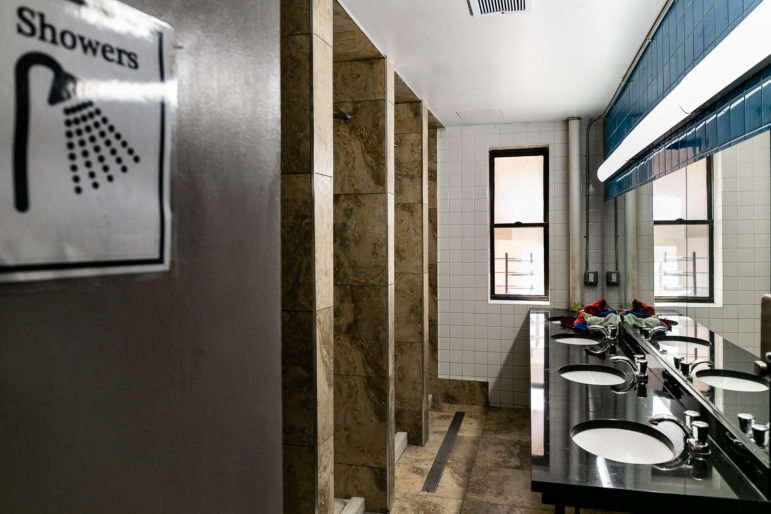
Adi Talwar
Residents on each floor share restrooms that are located in the hallways. A second-floor shower room has a row of four faux-marble stalls, while a separate room features four toilet stalls and sinks. During City Limits’ visit, swivel chairs and a custodian’s mop lined the hallway between the bathrooms and staff offices, evidence of a building in transition.
The restroom setup will be a major change for residents accustomed to private toilets and baths inside the hotel rooms. So will food storage and meals. At the hotel, residents have personal mini fridges and receive trays of pre-packaged food. At the shelter, they share three refrigerators in the ground-floor community room and eat meals prepared by kitchen staff.
“I’m not too crazy about sharing a bathroom,” said Debbie Ryan, as she sat outside the Sunset Park hotel July 22, her move on the horizon. Ryan, 55, said DHS assigned her to the hotel two months ago after she became homeless and visited an intake shelter. She said she has never stayed in a group shelter before and worries about sharing space with others at the Prospect Place site.
“I don’t want to stay there too long,” she said, adding that she is trying to secure housing elsewhere.
Another resident, Joan Alexander, said she has never been to the Prospect Place shelter either. She appreciated the privacy of the hotel room while recovering from a stomach procedure. “It was nice to have a place to live and rest my head, do my sewing,” she said.
A third woman, Cecilia Brown, said the hotel provided her with an opportunity to relax after living on the streets. She said staff helped her get a unit in a Manhattan supportive housing site. She moves into the new apartment on Thursday, she said.
There were 16,460 single adults staying in the DHS shelter system on July 20, according to the city’s most recent census report, compared to 17,558 on an average night in July of last year. Many people staying in the hotels have since found housing, while thousands of other New Yorkers became newly homeless during that time period.
CUCS Program Director Brooke Vanegas said that of the 90 women who lived at the shelter at the time of the hotel moves, 50 have since secured permanent homes, mostly in supportive housing sites. Others decided to move in with family members, she said.
Some residents have applied for so-called reasonable accommodations through a court-ordered process that forces the city to provide accessible and appropriate shelter based on an assessment of their health and mobility needs. City officials are moving individuals approved for reasonable accommodations into other hotel rooms, where they connect with new providers and workers tasked with helping them find housing.
Vanegas said about six CUCS residents have been approved to move into a new single-bed hotel room under this policy, while 26 had reasonable accommodations pending as of July 16. Some have said they plan to move into the new hotel rooms, while others are ambivalent — they want privacy but they also want to continue working with their clinical team and follow a consistent path to housing, Vanegas added.
Only about 15 women will ultimately be returning from the hotel sites to CUCS former lodgings at Prospect Place.
“It’s a whole new community,” Vanegas said. “Some people just entered the shelter system and went to the hotel. They’ve never been to a congregate [shelter], so there’s fear of the unknown.”
The challenge, she said, will be helping them remain healthy and feel safe in the shared space.
“Staff are ready to come back. With clients it’s mixed. They want to continue their care with us and there are a few who say, ‘I can’t be around other people so I don’t want to go,’ and what’s tied in there is safety,” Vanegas said.
CUCS officials say the hotel rooms undoubtedly saved lives. None of the women living in the Sunset Park hotel died of COVID-19, though the illness killed seven people across CUCS programs, Vanegas said. One shelter resident did die about a week after the move as a result of an opioid overdose in her hotel room. Vanegas said the tragedy motivated staff members to more regularly key-in to the rooms of people who they knew or suspected of using potentially lethal drugs. No other residents have died over the past year.
Joe DeGenova, the organization’s chief executive officer, said he understands the concerns about the return to shelters, but said the Prospect Place site provides a supportive community as residents pursue housing.
“It’s all about the relationships,” DeGenova said. “It’s not like people show up, sleep in a bed, take care of themselves and move on with their lives. I think of it as an ecosystem we try to create that’s respectful, safe, inviting and engaging.”
An ‘outlier’ in a sprawling system
The CUCS site is not representative of the entire DHS system, however.
Helen Strom, a supervisor of homeless advocacy for the Urban Justice Center’s Safety Net Project, said she considered CUCS an “outlier”— the agency is widely viewed as one of the city’s best homeless service providers, offering better conditions than many other group shelter sites.
Still, Strom, who has organized against the hotel transfers for months, said any congregate shelter “is inhumane and dangerous and lacks the basic dignity and privacy that any adult should have.”
In shelters elsewhere in the city, 20 or more adults share confines that resemble the size and density of a crowded subway car, as one homeless New Yorker told City Limits. Some sites have beds spaced a few feet apart, while others feature shared cubicles lined up in large rooms, like a converted basketball court.
“It’s like going from heaven to hell,” one resident said last month, two hours after the city transported her from a hotel back into a Bronx congregate shelter, where she now shares a room with more than a dozen other people. “The change is that drastic.”
Another man, Rafael Albelo, 52, said he has been moved among various shelters, including a stay in a 10-person dorm at the huge Bedford-Atlantic assessment shelter earlier this year and a shelter in Bushwick. The city continued to place people in some congregate shelters with social distancing measures in place even as they moved others into hotel rooms. “The bathrooms are filthy. It’s deplorable conditions,” he said. “It’s a scary situation living in a congregate shelter.”
Albelo has since been approved for a private room to accommodate his health needs and is staying in a Brownsville hotel.
“I have COPD, I have asthma, I have blood clots in my brain, my right arm is dead, I have PTSD and my conditions got worse at the shelter,” he said. “I’ve never been in this predicament in my life. And to see what people are going through is hurtful.”
A man staying in a shelter on Ward’s Island run by the organization Help USA described the indignities he has experienced over the past year, even while living in a private room because of his various medical problems. He asked to remain anonymous because he feared retaliation, like mistreatment or an abrupt transfer. Help USA administrators did not immediately respond to a message left with a shelter supervisor.
“A dog can live better than we do,” he said. “When it rains, it rains more on the inside than outside.”
The man shared videos of water dripping from a moldy ceiling, and a waterlogged chunk of drop ceiling laying on the floor outside the bathrooms.
“It creates mildew and we have to breathe that,” he said in one of the videos, which shows water stains overhead and buckets on the floor catching leaks. “We have to live like this, like savages.”
The Prospect Place building, in contrast, is clean with an institutional feel, tempered by resident artwork decorating the ground-floor hallways. For the past few weeks, CUCS staff have been preparing the offices, community spaces and dormitory floors for the upcoming return.
They have scrubbed the shared bedrooms, cleaned out the industrial kitchen and used about $40,000 from their DHS contract to upgrade the HVAC system, they said. The agency repaved a large outdoor patio and fixed up a wooden deck where residents gather for holiday barbecues or an evening smoke. As Vanegas, DeGenova and Chief Development Officer Mary Taylor talked with City Limits, a building security guard tested the long-dormant public address system.
“There’s a lot to check when you think of a building that has been empty” for more than a year, Taylor said. On one conference call, for example, city officials advised shelter providers to make sure their water systems were not contaminated with Legionnaires, DeGenova added.
Unlike most shelters, CUCS operates an on-site medical clinic 14 hours a day. The healthcare suite looks like a typical primary care physician’s office, full of medical instruments and a folding examination table partially concealed behind a curtain. The team from CUCS’ Janian Medical Care is key to furthering the organization’s vaccination efforts, DeGenova said.
CUCS says 60 percent of the women currently housed by the organization (54 of 90) have received the COVID-19 vaccine, as have 61 percent of staff — figures more than double the rate at other shelter locations.
DeGenova said he expects that more people will seek the vaccine once they leave the hotels.
“Their cost-benefit analysis will shift, so having vaccines available on site will be important,” he said.
COVID prevention isn’t the only reason to have a medical team on site, added Program Director Brooke Vanegas. All of the women in the CUCS shelter have a mental illness and most use medication for treatment. A veteran psychiatrist works on-site each day to provide treatment and check in consistently.
“Access to the doctor is so important,” Vanegas said. “If you start a new medication and in three days you feel dizzy on it, you can see them.”
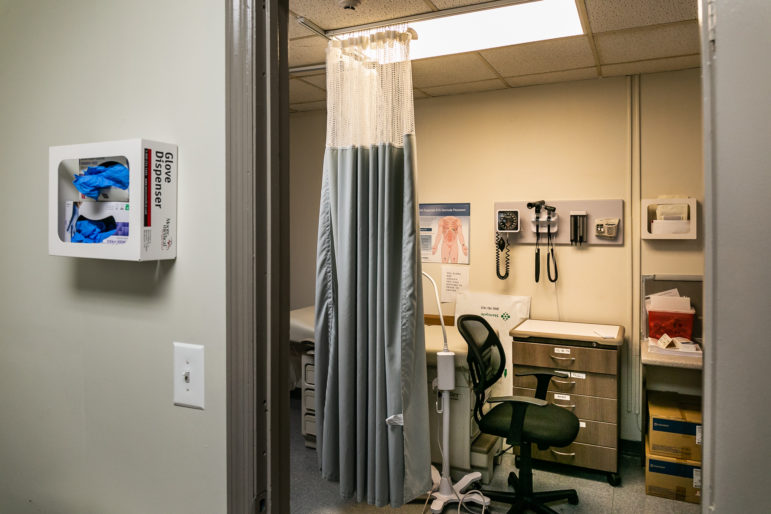
Adi Talwar
Better for services, or business as usual?
Citywide, it is all but certain that the majority of shelter residents and a significant number of workers remain unvaccinated, but de Blasio maintains that the facilities are safe and a more effective venue for staff to help people search for housing and meet their health needs than hotels. “The services that folks need in some cases, whether it’s mental health services or other services, are best provided in a shelter,” de Blasio told reporters July 14.
Many homeless New Yorkers and their advocates have excoriated that stance. They point out that providers have staffed the hotels, enabling residents to meet with on-site social workers and case managers while staying safe from COVID-19 in the relative privacy and security of a hotel room.
The hotel rooms have also eliminated other stressors common in the shelter system—from loud, night owl roommates to violence and theft—that can fuel substance abuse, lead to fights or simply make life worse for many New Yorkers experiencing homelessness.
“It is ridiculous for the mayor to claim shelters are the best place for us to find housing,” said VOCAL-NY organizer Milton Perez, who is currently homeless and staying in a Brooklyn hotel, at a rally last week. “I have seen how the stability of the hotel has improved the outlook of so many of the guys around me.”
Perez and other advocates have accused de Blasio of rushing the hotel clearance plan, particularly in Midtown Manhattan, for political rather than public health reasons. The policy, they say, is intended to appease New Yorkers who stigmatize people experiencing homelessness. “The mayor has always shown a disregard for people in our situation, and this is nothing more than an attempt to get us back to business as usual,” Perez said.
CUCS officials, however, say de Blasio’s decision is grounded in reality, at least when it comes to their shelter.
“As an organization, we are grateful that we have all worked so hard to get to a state in New York City that we’re safer and I think we’re also very happy to return to our permanent sites because this is where we feel we can really best help people,” said Taylor, the head of development.
The return to shelter will mean even more staff encounters for CUCS clients. During the daytime, 22 people work at the shelter, compared to 15 at a time in the hotel. The staff members include two social workers who visit intake shelters and assess whether women meet the CUCS eligibility requirements for mental illness. Three clinical teams — each with a supervisor, licensed social worker and two case managers — work with residents on their caseloads and help them connect with housing and meet their other needs.
She acknowledged that the CUCS model is not necessarily the norm across the shelter system.
“We feel we are more effective running smaller programs in our ability to provide care and case management and individual attention,” Taylor said. “We can’t speak to what it’s like running a 200-bed shelter.”
New Yorkers speaking up at rallies and in interviews have described dangers and discomfort at homeless shelters throughout the five boroughs, even as they thank the service workers who assist them.
“Don’t blame these workers because they did a damn good job,” shelter resident Anthony Campbell said earlier this month after leading a protest against a move out of a Midtown hotel. “They risk their lives. They’re heroes.”
“But we’re going to a dormitory. A place that’s not suitable for a human being,” Campbell continued.
In a statement, a DHS spokesperson also praised the staff members and said the de Blasio administration always intended to end the use of the hotel rooms once COVID rates dropped. The city intends to end the use of the COVID hotels by the end of August, a DHS spokesperson said.
“Over the past year-plus, our invaluable frontline staff, provider partners, and outreach teams have gone above and beyond amid unprecedented circumstances to protect and support the New Yorkers experiencing homelessness who we serve,” the spokesperson added. “This includes adapting quickly at the height of the pandemic and temporarily relocating thousands of individuals from shelters to commercial hotels to provide them with the same protections from the virus as individuals who were fortunate enough to be able to socially distance at home during this crisis.”
Permanent housing remains the ultimate goal of the shelter system, though it is elusive for thousands of residents.
In the short term, advocates and a coalition of City Council candidates have called on de Blasio to immediately sign and implement a new measure that would increase the value of rental vouchers to open up more apartments for people experiencing homelessness. They have urged the city to move people from hotels to homes, not back to shelters.
Despite the obstacles they have faced, the three women sitting outside the Sunset Park hotel told City Limits they remain optimistic about their search for a home. They said seeing their peers access apartments while staying in hotel rooms has given them hope.
“This is just a stepping stone,” said Alexander, who became homeless when her husband died. “I can see people moving. I’m 63 years old and I want to get there.”


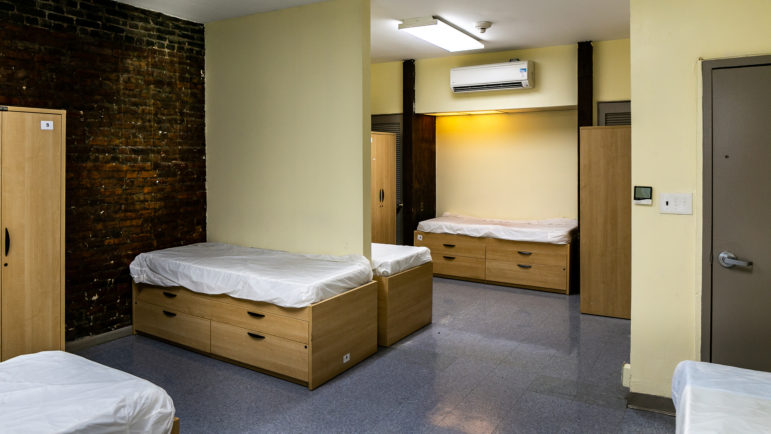
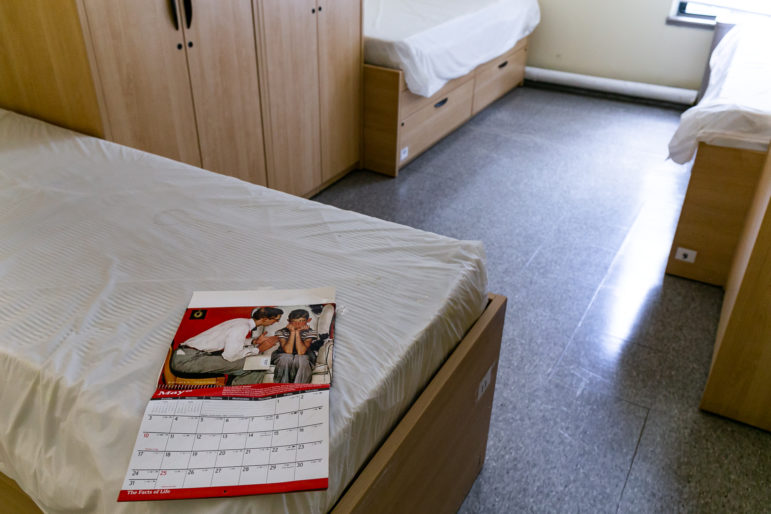
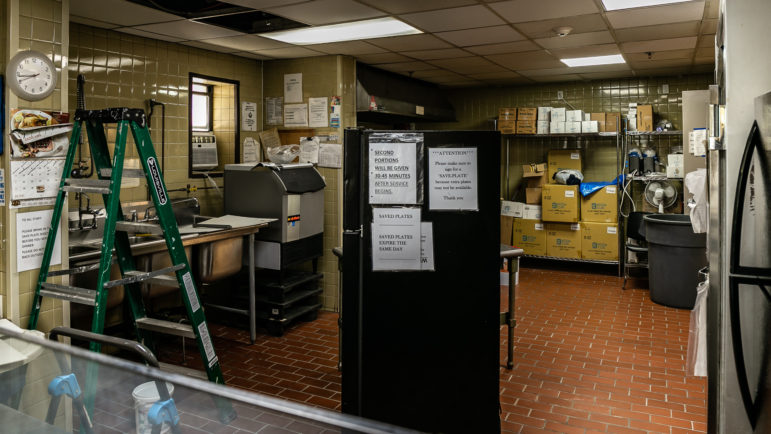
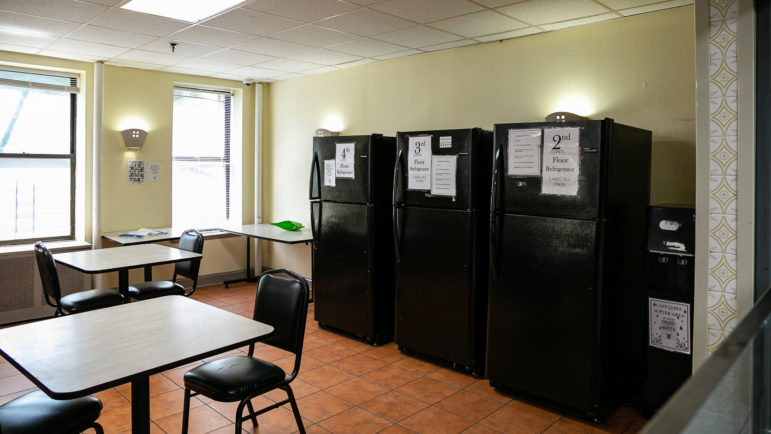
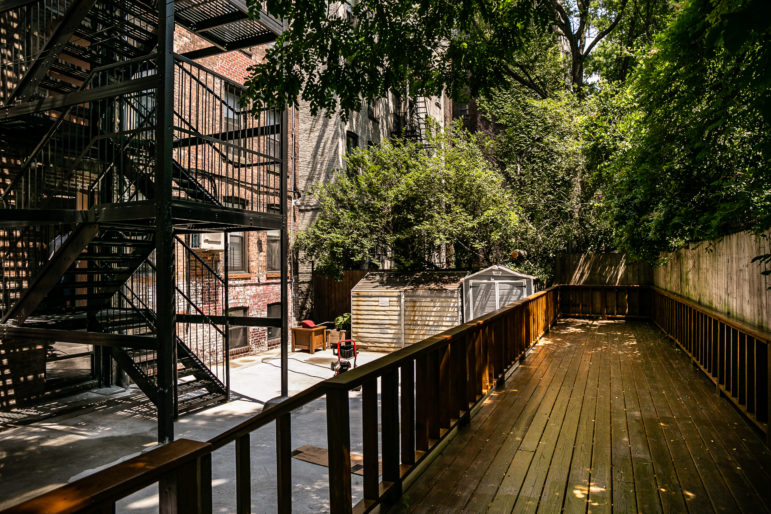
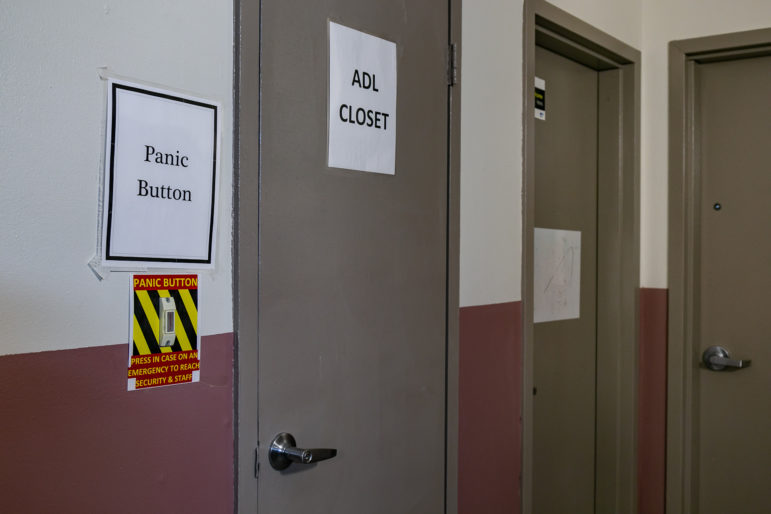





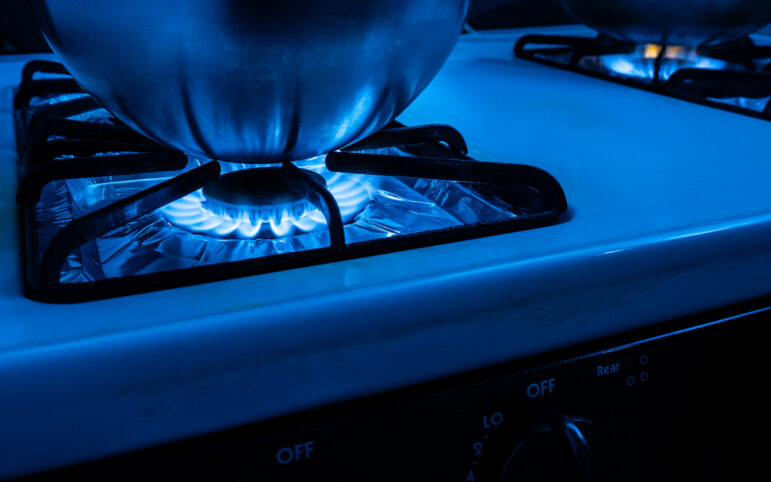


2 thoughts on “At a Brooklyn Homeless Shelter, Staff and Residents Readying for Return”
Some of us are not as lucky to receive our medications or other luxuries such as privacy, quiet or just a kind word. Most shelter staff are rude, condescending and have stated that they do not intend to help certain people because they don’t like them. We still have to get up at 6am, leave the shelter for the entire day and this isn’t possible when you take medications or are just plain tired. We are treated like children, spoken to like children and often threatened with violence. I do not wish to be around others who want to sleep all day and stay up all night drinking or doing drugs, and I am tired of having to physically fight with a person simply because (as staff tells us) “Well this is a shelter this is what it is.” Some of these people are down right psychotic and will attack without provocation. If you’re over 60 like I am you are a target everyday. No one helps us…we’re just cash cows for DHS. The longer they keep us the more money they make. So why help us leave when you’re making money off of us? The move to the hotel has helped many. It reduces stress, keeps us hopeful. The shelter strips us of our dignity, makes us feel unworthy and as shelter staff often reminds us “who would rent to you? You’re homeless and no one wants to live next-door to a homeless person”. Right now my blood pressure is soaring and the migraines have returned. My next stop is most likely the city morgue. I can’t take the pressure anymore.
Well said!! I’m a veteran at a shelter for veterans and everyday guys like me wake up treated as though we are being punished for our service. Like we are an enemy now.
Hope you are still alive and have garnered the proper attention affording eventual relief.
Keep fighting. You are noy alone. A few of us ate fighting the same enemy from a different vantage point. Humanity will overcome.
We appreciate your service to your community by speaking up and pushing forward as an example of victory over obstacles.
Gods speed!